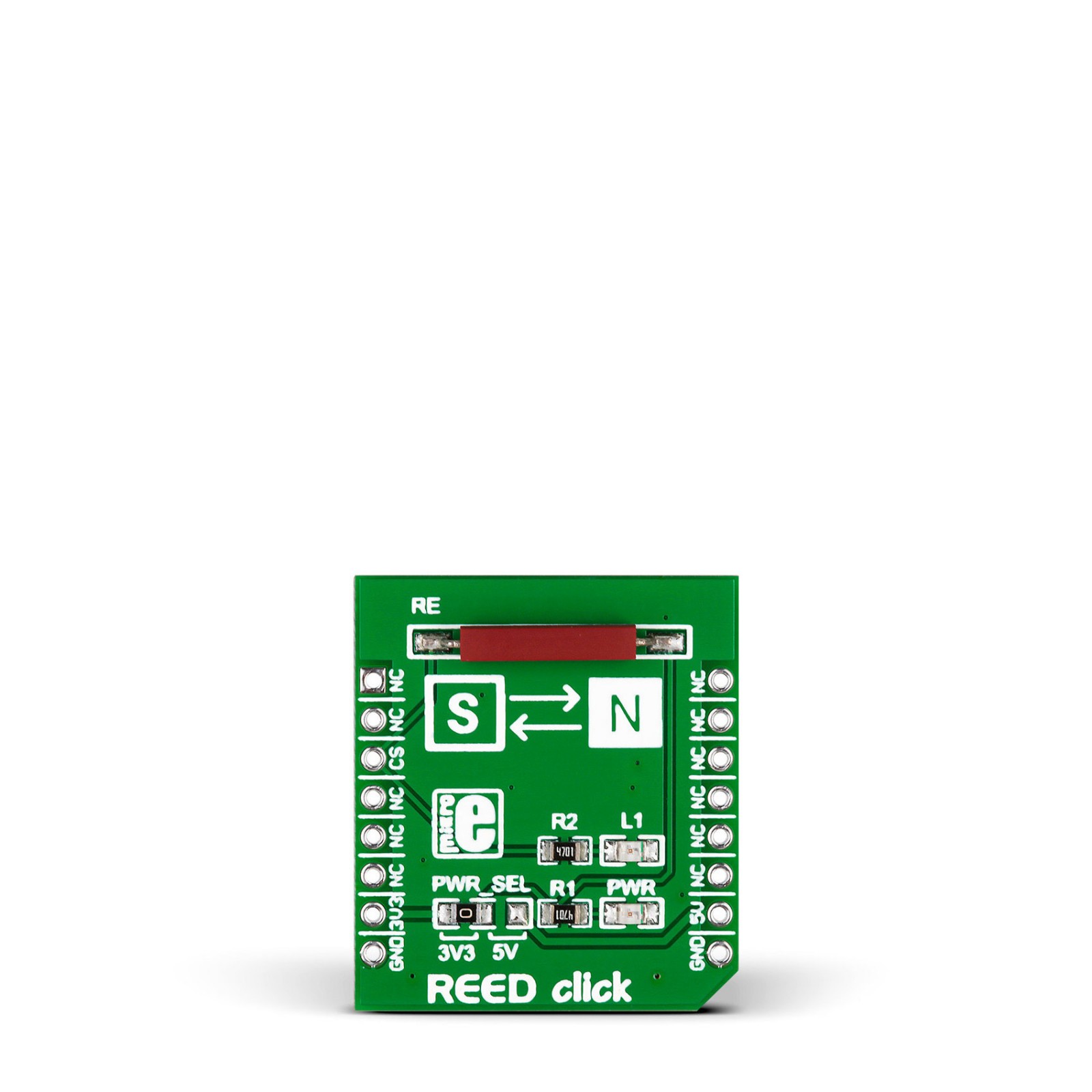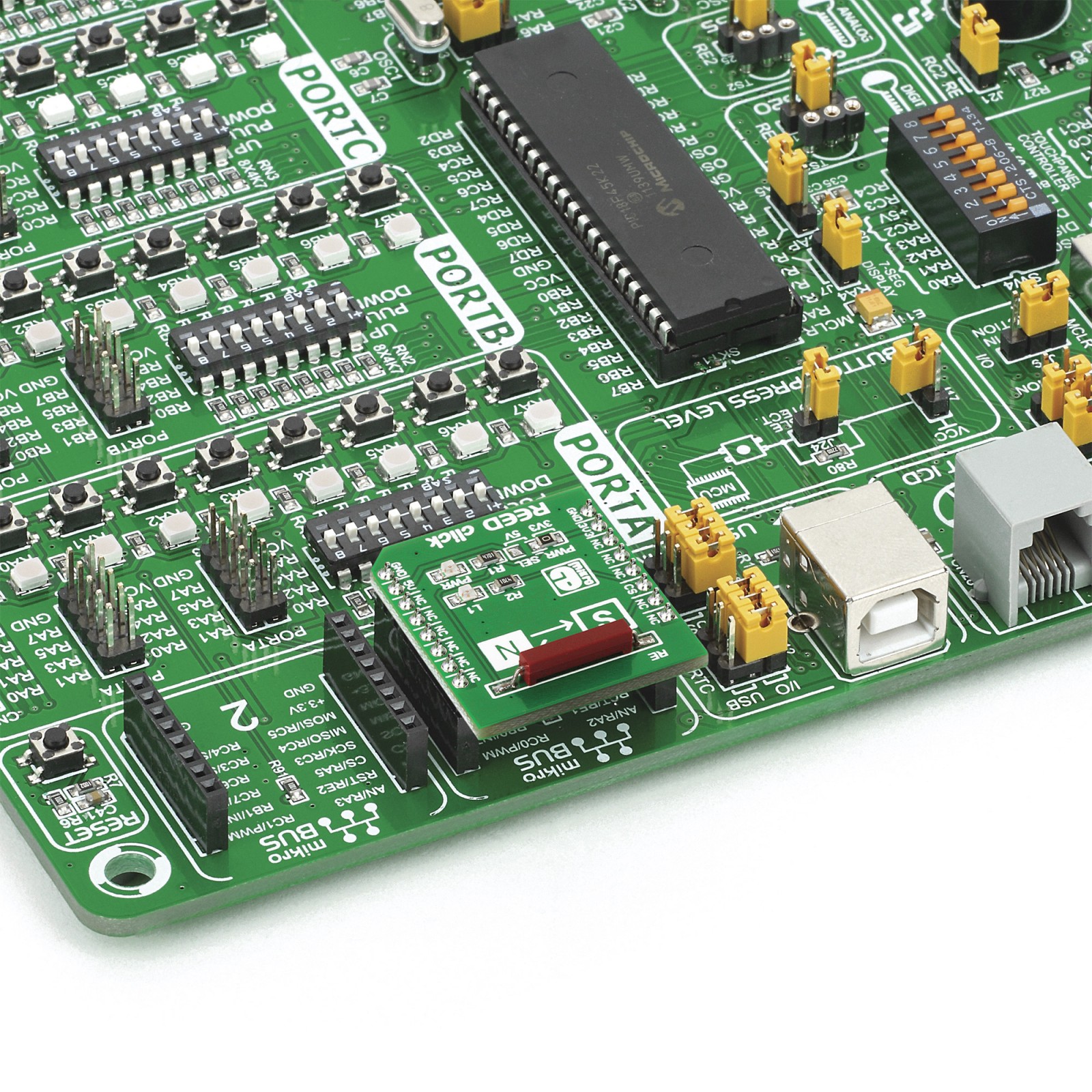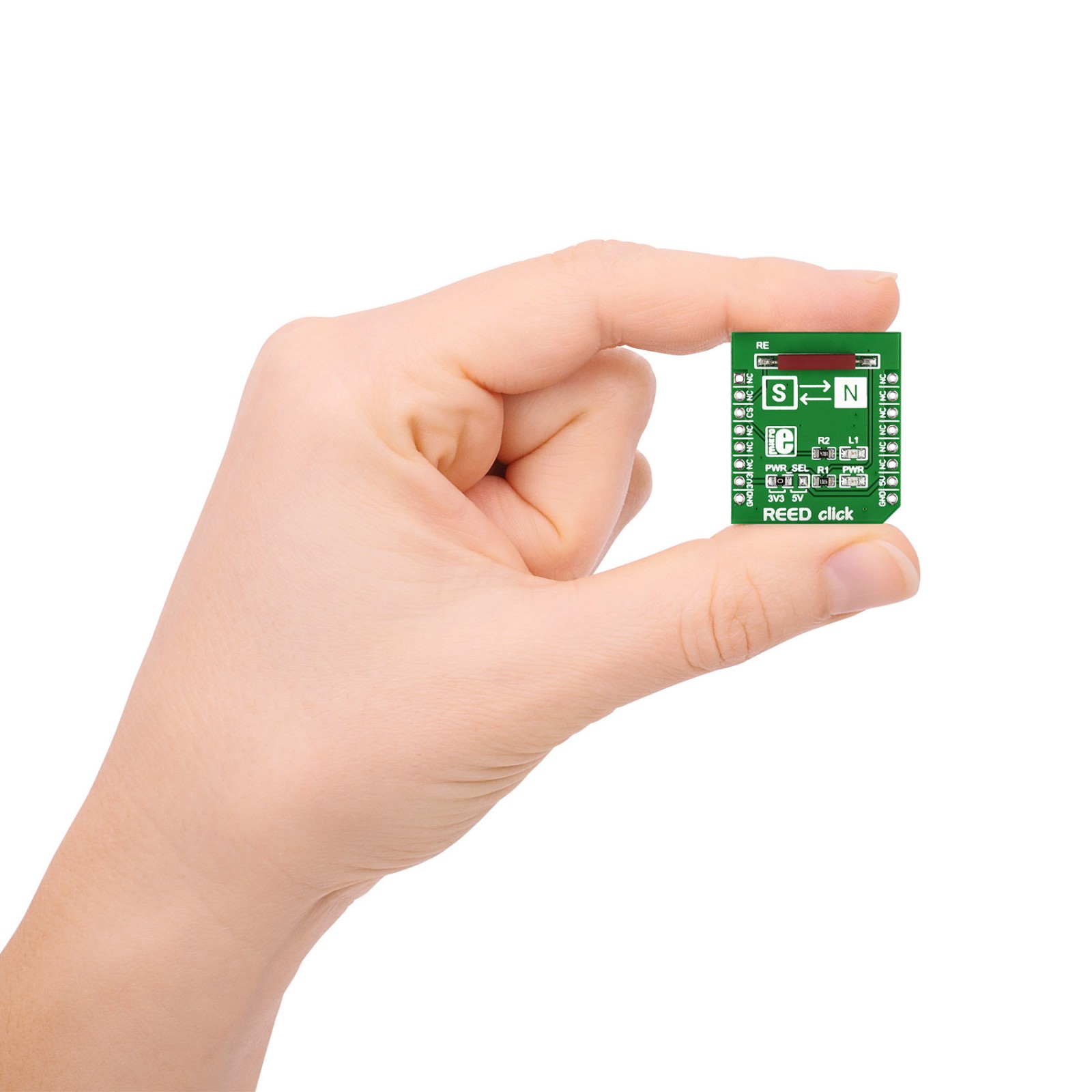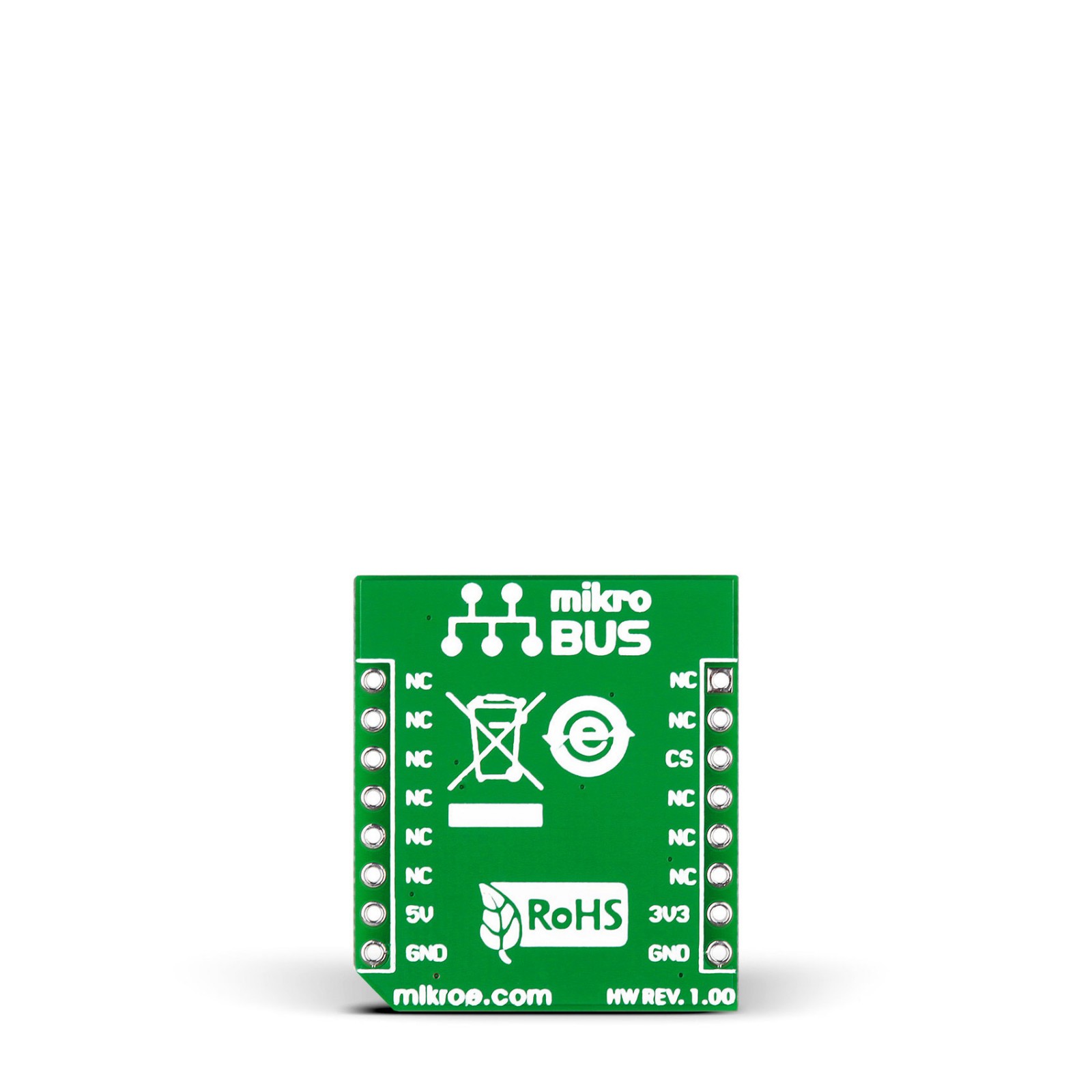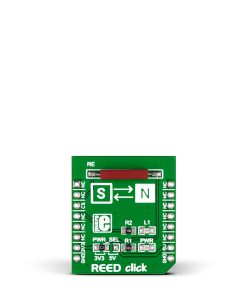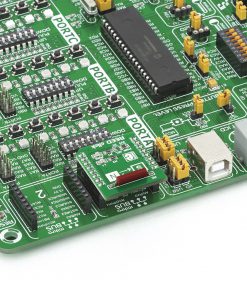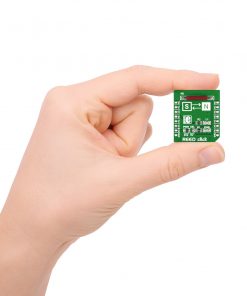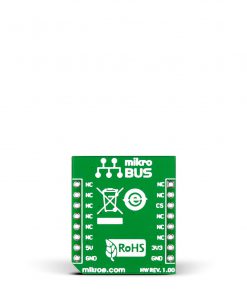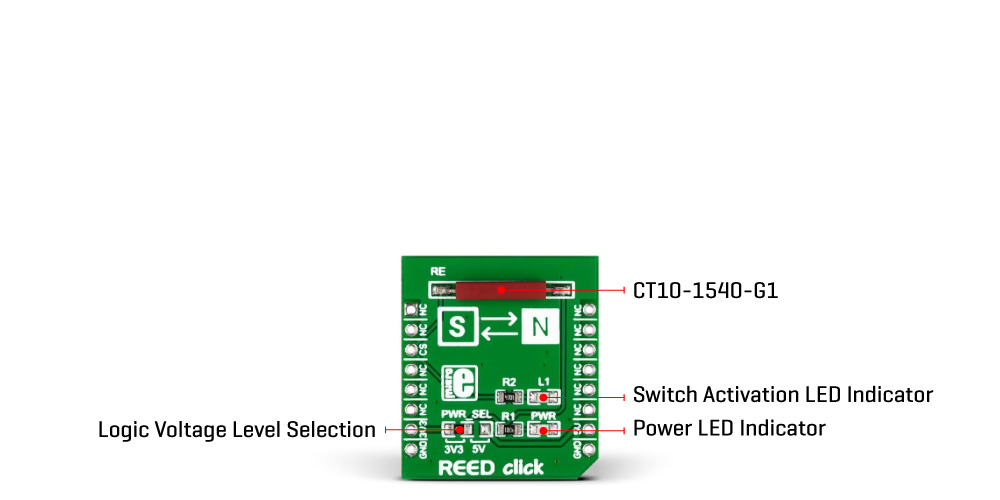REED Click
R145.00 ex. VAT
REED Click is a compact add-on board that adds an electromagnetic switch to your application to control the flow of electricity in a circuit. This board features CT10-1540-G1, a Coto Classic C10 series molded reed switch from Coto Technology. This sensor uses a presence of a magnetic field to make contact with internal poles, thus enabling the flow of electricity through itself in a circuit. The two contacts are separate until a magnetic field is applied, which snaps them, activating the switch. This Click board™ makes the perfect solution for proximity sensing, security alarm sensor, level sensor, flow sensor, pulse counters, and more.
REED Click is supported by a mikroSDK compliant library, which includes functions that simplify software development. This Click board™ comes as a fully tested product, ready to be used on a system equipped with the mikroBUS™ socket.
Stock: Lead-time applicable.
| 5+ | R137.75 |
| 10+ | R130.50 |
| 15+ | R123.25 |
| 20+ | R118.61 |

